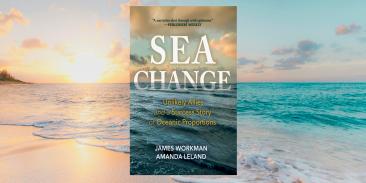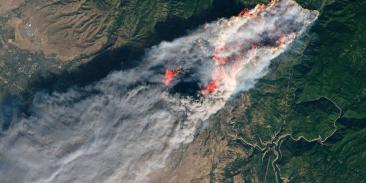Fossil Creek Featured as Arizona River of the Month
(PHOENIX—December 21, 2012) Today, Fossil Creek was featured as the Arizona “River of the Month,” the tenth in a year-long series celebrating the state’s rivers in honor of its centennial year. The short profile released today by five conservation groups highlights the river’s ecology, geography, and use by the people who rely on it, as well as the threats to the river.
Fossil Creek originates north of the community of Pine at Fossil Springs, a series of springs at the bottom of a deep canyon of the Mogollon Rim. From Fossil Springs, Fossil Creek flows southwest, primarily through national forest lands and a gradually widening canyon, and joins the Verde River approximately 20 miles southeast of Camp Verde. Throughout the creek’s course, deposition of travertine creates deep pools and waterfalls. Over time, these limestone deposits gradually encase anything that falls into the creek, creating the fossil-like features for which it is named.
The deep pools, waterfalls and fossil-like deposits that today characterize the creek were once disrupted by the presence of a dam which, for nearly 100 years, diverted water to the Childs and Irving power plants. In 1999, in light of the unique natural resources being impacted by the dam and after years of activism and collaboration among diverse stakeholders, Arizona Public Service Company (APS) decided to decommission the dam and shut down the power plants – enabling the restoration of Fossil Creek.
Today, the revitalized creek is considered to be the prime native-fish restoration area in Arizona. Fossil Creek also became the second river in Arizona to receive federal designation as a “Wild and Scenic River” and was designated as an Outstanding Arizona Water by the state – significant achievements considering that for 100 years Fossil Creek was often completely dry.
The River of the Month series profiles one of Arizona’s rivers each month. It is produced by Environmental Defense Fund, Grand Canyon Trust, Sierra Club, Sonoran Institute, and Western Resource Advocates, with technical assistance provided by the University of Arizona Water Resources Research Center. Previous profiles—starting with a feature of the iconic Colorado River—may be downloaded from Environmental Defense Fund, Sonoran Institute, or Western Resource Advocates, and interested groups and individuals may sign up here to receive a notification when a new profile is released.
With more than 3 million members, Environmental Defense Fund creates transformational solutions to the most serious environmental problems. To do so, EDF links science, economics, law, and innovative private-sector partnerships to turn solutions into action. edf.org
Media Contact
Latest press releases
-
EDF, Allies File Comments Urging the Trump EPA to Continue the Greenhouse Gas Reporting Program
November 3, 2025 -
Cost of Trump Administration’s Mandates to Keep Michigan Coal Plant Open Balloons to $80 Million
October 31, 2025 -
EDF Strengthens Role in Ocean-Climate Governance with New Consultative Status at the IMO’s London Convention and Protocol
October 31, 2025 -
New analysis finds Indigenous lands and protected areas are key in slowing deforestation
October 28, 2025 -
New Poll: Republicans, Democrats and Independents Strongly Oppose Weakening Chemical Safety Law
October 27, 2025 -
Court Rules New York Must Implement State Climate Law and Deliver Swift Action
October 24, 2025










